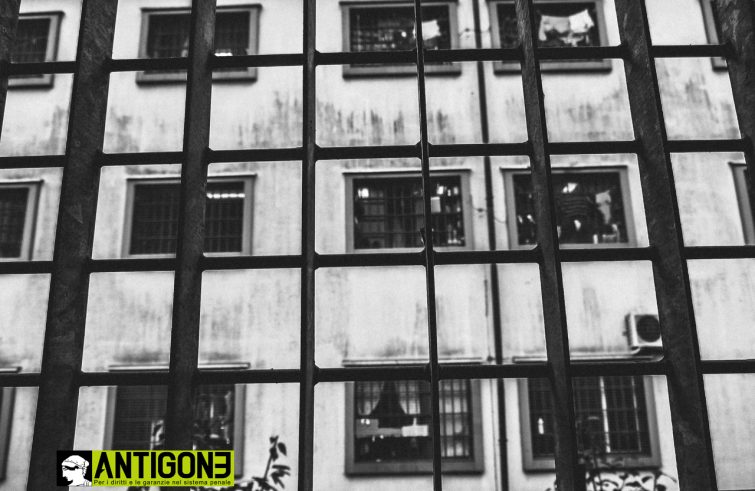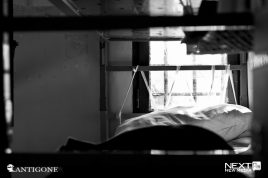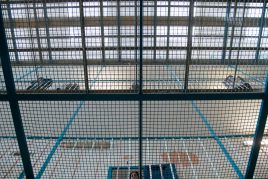
Increasingly overcrowded prisons with rising suicide rates. This is the snapshot of the Italian prison system outlined in the 20th report on prison conditions drawn up by the Antigone association, titled “Nodo alla gola“, presented in Rome on Tuesday. “The situation of the Italian penitentiary system, which emerged from extensive monitoring activities of 99 prisons in Italy in 2023, is tragic,” said Patrizio Gonnella, President of Antigone. “We have long urged that this issue be placed high on the political agenda to address the many problems that are clearly mounting.”
 A staggering 30 suicides have been reported in the first few months of this year, which is 10 more compared to the same period in 2022, when 85 inmates took their own lives (the highest number to date). “Should the trend of these first four months continue for the rest of the year,” reads the report, whose title unsurprisingly refers to hanging, the most common method of inmate suicide, “2024 would see another alarming all-time high.
A staggering 30 suicides have been reported in the first few months of this year, which is 10 more compared to the same period in 2022, when 85 inmates took their own lives (the highest number to date). “Should the trend of these first four months continue for the rest of the year,” reads the report, whose title unsurprisingly refers to hanging, the most common method of inmate suicide, “2024 would see another alarming all-time high.
The overall suicide risk of prisoners was 18 times higher compared to the non-convicted.”
High numbers of young people and foreign nationals. Italy is among the countries with the lowest suicide rates, according to WHO data for 2019. On the other hand, data from the Council of Europe for the year 2021 show that Italy is above the European average in terms of prison suicides. Marginalization is a common factor in the stories of people who take their own lives. A large number of young and very young people, as well as many non-Italian nationals, commit suicide at a significantly higher rate than Italian inmates. Mental illness, confirmed or presumed, is also high among the homeless and those with a history of drug addiction.
Record prison overcrowding. All prisons where suicides have occurred in the last year and a half are overcrowded to varying degrees. On 31 March 2024, there were 61,049 people in prison compared with a registered capacity of 51,178. At the same time, the prison population has increased by an average of 331 prisoners per month over the past year. “If this figure were to be confirmed in 2024,” the report states, “there would be a total of more than 65,000 prisoners by the end of that year”. There are several reasons for this increase. These include:
Longer prison sentences, less willingness on the part of supervising magistrates to grant alternatives to imprisonment or early release, the adoption of new criminal laws and police procedures leading to an increase in prison admissions.
However, Antigone, notes, “this increase in the prison population does not correspond to an increase in the number of crimes. From 1 January to 31 July 2023, a total of 1,228,454 offences were committed in Italy, signaling a 5.5% reduction compared to the same period the previous year”.
 The most overcrowded prisons at the end of March were Brescia Canton Monbello (209.3%), Lodi (200%), Foggia (195%), Taranto (184.8%) and Rome’s Regina Coeli (181.8%). And building more is not going to help: “In the recent past, it took an average of eight to ten years to build a detention centre or prison, with an average cost of €30 million for a prison with a capacity of 400 inmates. This means that about 40 new prisons would be needed today, at an estimated cost of €1.2 billion. On top of these sums, which are considerable, a minimum of 300 police officers would have to be recruited for each prison, amounting to a further 12,000 prison police officers, in addition to all the other staff needed to run the prison facilities.”
The most overcrowded prisons at the end of March were Brescia Canton Monbello (209.3%), Lodi (200%), Foggia (195%), Taranto (184.8%) and Rome’s Regina Coeli (181.8%). And building more is not going to help: “In the recent past, it took an average of eight to ten years to build a detention centre or prison, with an average cost of €30 million for a prison with a capacity of 400 inmates. This means that about 40 new prisons would be needed today, at an estimated cost of €1.2 billion. On top of these sums, which are considerable, a minimum of 300 police officers would have to be recruited for each prison, amounting to a further 12,000 prison police officers, in addition to all the other staff needed to run the prison facilities.”
REMS. On 31 December 2008, there were 577 incapacitated or temporarily incapacitated patients admitted in 31 “Residenza per la esecuzione delle misure di sicurezza (REMS)” (Residence for the Execution of Security Measures, hereinafter “REMS”, which replaced forensic psychiatric hospitals, Ed.’s note), which is slightly below the total capacity of about 600. Of these, 63 were women (11%) and 144 were foreign nationals (25%). The latter increased compared to 2022 (131 patients) – there were 104 in 2021 and 79 in 2020.
Increasing number of juveniles in youth detention centres in Italy (Istituti Penali per Minorenni, hereinafter “IPM”). At the end of February 2024, 523 young people were detained in Italy’s 17 juvenile prisons. The number of young people held in these institutions is growing rapidly: they numbered 496 just two months earlier, at the end of 2023. At the end of 2022, a total of 381 young people were imprisoned in Italy’s IPMs, marking a more than 30% increase in one year. Of the 523 young people detained at the end of February, 312 were adolescents and 211 were young adults. There were only 18 girls, seven of whom were foreign nationals. “The number of admissions to IPMs recorded in 2023 was 1,143, the highest in the last ten years,” the report reads. This increase is also linked to the entry into force of the so-called ‘Caivano’ Decree”.
 Women and children. The proportion of women in Italian prisons has remained stable at 2,619, or 4.3% of the prison population. This proportion has fluctuated only slightly in recent decades. A total of 19 women are currently in prison with their 22 children, including in mitigated custody facilities for incarcerated mothers (Istituti a custodia attenuata per detenute madri – ICAM) and prison nurseries. By 31 December 2023, there were a total of 20 incarcerated mothers with 20 children, along with 12 pregnant inmates.
Women and children. The proportion of women in Italian prisons has remained stable at 2,619, or 4.3% of the prison population. This proportion has fluctuated only slightly in recent decades. A total of 19 women are currently in prison with their 22 children, including in mitigated custody facilities for incarcerated mothers (Istituti a custodia attenuata per detenute madri – ICAM) and prison nurseries. By 31 December 2023, there were a total of 20 incarcerated mothers with 20 children, along with 12 pregnant inmates.









